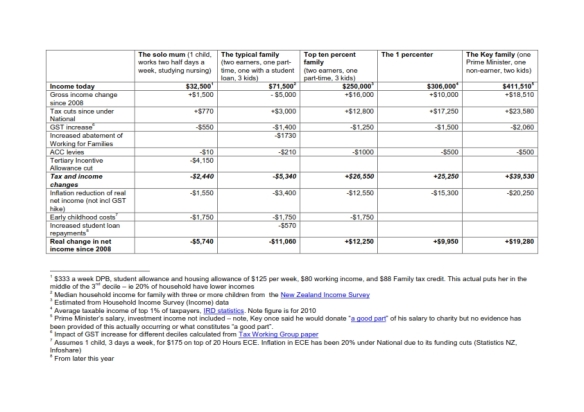Later this week a seminar is being held in Wellington to celebrate 100 years since the formation of the ANC (African National Congress) and to also look at the history of the anti-apartheid movement under the heading ‘How New Zealand helped to abolish apartheid’.
Several Wellingtonians active in the anti-apartheid struggle have organised the event where the keynote address will be given by former ANC Cabinet Minister Arnold Stofile.
Several people have asked me if I will be attending or alternatively why I won’t be attending so for the record I’m reprinting here the emails I sent declining the invitation.
To the organising committee (18 March 2012)
Thanks for the note. I’ve given it some serious thought and have decided to decline the offer to take part. I don’t think the programme can have real credibility as it stands unless in some way it addresses what has occurred in South Africa in the 18 years since the ANC was elected to power. I, and most people in the anti-apartheid movement in New Zealand, took part in the boycott campaigns not to simply change the colour of the faces of those who ruled South Africa. We didn’t face batons and barbed wire to replace race-based apartheid with economic apartheid. Our intention wasn’t to stop the apartheid gravy train for the wealthy just long enough for a tiny number of the black elite to jump on.
I appreciate the seminar is about New Zealand’s role in the struggle to see the end of race-based apartheid but it seems designed to avoid the uncomfortable questions about what the ANC has done with its democratic mandate which our actions here were designed to help bring about. The seminar should be prepared to hear from the many organisations fighting for decent housing and jobs etc in South Africa but who now suffer harassment and hounding by the ANC In short I think the seminar needs to have some serious critique of the ANC’s neo-liberal economic policies which are enriching the few at the expense of the many just as they have done in New Zealand for the past generation under successive Labour and National led governments.
Without this I think the seminar will be just an exercise in nostalgia.
John Minto
After a second invite I wrote again on 28 June:
Thanks for the note. Sorry for the late response but things have been hectic this week. _____ wrote and asked me to speak on one of the panels which was the first I’d heard of the event. I replied that I wouldn’t speak and for the same reason as I explained to her I won’t be coming either. For a number of reasons I don’t think it’s helpful to tie an event to mark the ANC Centenary with an event to examine the history of the New Zealand anti-apartheid movement. For example the movement in the earlier decades under discussion offered much broader support to the liberation struggle that to just the ANC. But my greatest concern is the failure of the seminar to look at what the ANC has done in the last 18 years of that centenary – namely when it has been in power in South Africa. You will know what I mean. The voices we should be bringing to New Zealand (as we did last year for the 30th anniversary of the Springbok Tour) are those such as S’Bu Zikode from Abahlali baseMjondolo who speaks for a large group of the dispossessed in South Africa and whose movement has suffered violent attacks and killings at the hands of young ANC activists.
On the same day I received your email below I received a statement from ABM which commented on the ANC celebration of its centenary with these words:
“All is slowly sinking as the new government is making sure that we remember the heroes of the struggle but not what the struggle was for”.
My concern is the seminar is precisely reflecting that view rather than the much more arguable view that the ANC has betrayed the struggle of the people of South Africa. The seminar looks more like an exercise in nostalgia than an honest appraisal of the ANC then and now.
This is not intended as an attack on the people taking part in the seminar, many of whom I have great respect for. It’s unfortunate I didn’t have the opportunity to comment on the proposal before it was set in concrete as I would have put forward these views then and perhaps the seminar could have been associated with a much more robust analysis of ANC history.
John Minto

